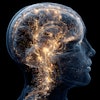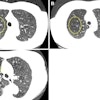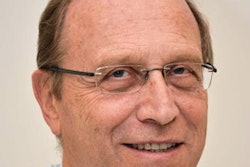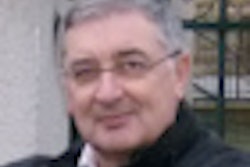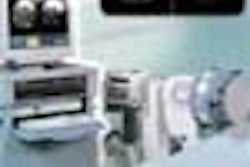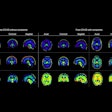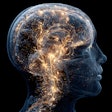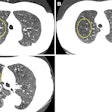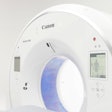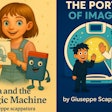
AuntMinnie.com is pleased to bring you the results of an interview this week with ECR president Dr. Philippe Grenier of Paris, who offers his insightful comments about the conference, its highlights, and the difficulties the ECR still faces. The following comments are translated from the original French text.
How did you come to be involved with the ECR?
It's important to understand the history of the ECR, which began in 1967. It was a conference that took place every four years, and was organized in the country of the president.
Beginning in 1985, a committee established by the ECR's executive committee considered the possibility of organizing the meeting every two years, to be held in a single city. The choice of Vienna was made for geopolitical reasons (its central location in Europe, its avoidance of a large country that might favor some large radiology vendor or other, and its proximity to the eastern countries that were important to support).
The first conference to be held under the new formula took place in 1991, organized by professor Joseph Lissner of Munich. The foundations were established that year, and since then the conference has been held every two years, until 2000, when it became an annual event.
For my part, in 1991 I was lucky enough to be recruited by professor Lissner to head the thoracic radiology committee, and then two years later, by professor (Albert) Baert as co-chairman of the educational program, a position I held for the next four conferences. Then I was recruited as a member of the executive committee, and finally named president of ECR 2002.
This is an 11-year assignment I have embraced with pleasure and enthusiasm. I am not the first French president, as Professor Guy Delorme organized the conference in Bordeaux in 1983.
My vision for the meeting is as follows: For 11 years, the conference has integrated more and more new concepts, especially in the information technology space with the creation of Eurorad, the Matrix, the Box, and since ECR 2000, IHE (Integrating the Healthcare Enterprise) Club.
The number of participants has continued to grow, along with the number of scientific abstracts submitted. Notably, this year the number of abstracts grew by 24%.
The level of scientific communications has also continued to grow. The most-represented countries in the conference are Germany and Italy, followed by the eastern countries and Austria. The Scandinavians came in great numbers at first, but their participation diminished a little, and has now stabilized.
There isn't a lot of participation from the U.K., but considering the low number of radiologists there, the percentage participating is entirely reasonable. There are many Greeks, far fewer Belgians than before, and a marked absence of French and Portuguese.
Having so few French participants creates a problem for the French president, so this year we launched a significant marketing effort. We're expecting about 300 French participants this year, which is improved but still weak. I hope this will shock the French into realizing that we can't do European radiology without them.
The Société Française de Radiologie (Radiologic Society of France) has been a great help in promoting the ECR this year. I am indebted to professor Guy Frija, the SFR's secretary general.
And your work with the French Radiology Society?
As for my position at the SFR, I've been assistant secretary general for more than 10 years. The organization is led by a secretary general with a four-year term, renewable several times. A new president is named every year, and fulfills an honorary role.
As a specialist in thoracic radiology, what trends are you seeing in your practice? In European radiology as a whole?
For several years now, thoracic radiology has benefited significantly from CT. Spiral CT was a real revolution, especially with regard to the exploration of pulmonary embolism and the airways. The advent of multislice CT is another leap forward, with even better diagnostic abilities in the pulmonary vessels and airways, as well as the detection of pulmonary nodules, and its enormous potential impact on the early detection of bronchopulmonary cancer.
In Europe, thoracic radiology is structured around a scientific society known as the European Society of Thoracic Imaging, founded in 1991. I am a founding member, and have served as secretary general for the past eight years.
What do you think are the main differences between the American and European approaches to radiology, and what are the implications?
The big difference between the Americans with RSNA and the Europeans with ECR is that it's much easier to get the Americans united around a meeting as strong as the RSNA in Chicago. The RSNA has become a worldwide conference supported by the entire radiology equipment industry, and a technical and commercial exhibition.
It's more difficult to unite the Europeans in a single conference in English, since we are a multilingual group, and each country has its own national society and its own meeting every one or two years. There's a certain overlap between the national meetings and the European meeting. The most significant example is the French meeting, which is extremely well organized and draws 5,000 radiologists each year.
The second problem is the difficulty of convincing the industry of the strategic importance of having a strong European meeting. Industry certainly follows the ECR, but it doesn't really have a policy of development for the conference. The vendors prefer to favor the worldwide technical exposition in Chicago. It's up to us to convince them otherwise.
I understand that you have invested significant time and effort in developing the program for this year's ECR conference. Can you share with us some of your goals and considerations, as well as some of the problems and solutions you encountered in the process?
The program is divided into two parts: scientific and educational. For the educational program, we have two categorical courses, one on ultrasound and one on MRI. There are also the refresher courses and workshops, which are extremely broad-based, and cover every field of medical imaging and interventional radiology with more hands-on workshops -- (for example) on echocardiography and contrast-agent accidents.
The educational program also includes plenary sessions on the state of the art in four major subjects:
- Colonography: how do I do it
- Low-back pain: evidence-based medicine
- PET -- addition or competition
- Multislice CT: new developments and applications
There are also nine focus sessions on subjects that are considered controversial, or "hot topics." We made sure to distribute the time so as to ensure concordance between the scientific and educational programs and the technical exhibition, and give everyone time to visit the visit the vendor booths.
Once again we have included the satellite symposia, organized and sponsored by industry, in order to facilitate the transfer of technical innovation from industry to clinical practice. We have again reserved a large space for information technology, and we have included three honorary lectures on advanced imaging to help prepare us for the future.
The development of advanced imaging is certainly crucial today, as our specialty faces critical professional challenges such as staffing shortages and turf battles with physicians and surgeons. Being at the forefront of advanced imaging is the best way to ensure our survival. The chief drawback has been our inability to convince the vendors to install heavy equipment for the technical exhibition, as they did for RSNA.
What sessions and speakers do you think will be particularly intriguing this year? What are some of your personal favorites?
For the first time we have organized a session on molecular imaging. As molecular biology and genetics displace medical research, we must work to develop molecular imaging, grossly defined as the measurement and description of biologic processes in vivo at the cellular and molecular levels. This work has already become a new specialty for many radiologists. We also insisted on including a session on noninvasive coronary artery imaging using MRI and multislice CT.
There will be an opening session by Professor Charles Higgins on the history and future of cardiac imaging. We also made sure to include a session on progress in imaging the colon and small bowel with multislice CT and MRI. There is a session on the state of the art in PET combined with CT -- a long-awaited development in oncology for which the two modalities are ideally suited. This session will look at the preliminary research.
I strongly recommend attending the honorary lectures:
- Dr. Denis Le Bihan (Orsay/FR): Antoine Béclère Honorary Lecture: "Bridging the gap between brain anatomy and function with MRI"
- Dr. Elias A. Zerhouni (Johns Hopkins/USA): Godfrey Hounsfield Honorary Lecture: "Current trends in imaging research"
- Dr. Willi A. Kalender (Erlangen/DE): Wilhelm Conrad Röntgen Honorary Lecture: "What are the limits of resolution in CT?"
What new features of the ECR are particularly interesting this year?
What's really new in comparison with previous years is the decision to be far more selective in choosing the scientific papers and exhibits for the conference. A 35% rejection rate has made ECR the most selective conference in the world. This is what will enable the ECR, contrary to its reputation, to offer a selective program of high-quality research.
The other new development has been to allow radiologists to submit posters with much later deadlines for "hot topics." Submissions for "cutting-edge developments in radiology" were accepted just seven weeks before the conference date. After a rigorous review process, only 20 of these posters were accepted to illustrate the hottest developments in radiology.


